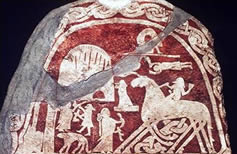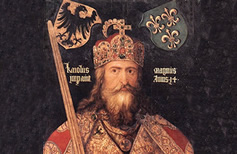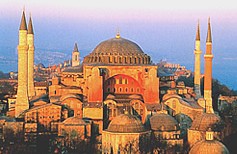Oct 15 2010
Categories: Sculpture
Bronze doors on churches of Xth and XIth century
9During the XIth and XIIth century many cathedrals and churches in Europe are equiped with doors made in bronze. Most of them were built in Byzantium, and were later imported in the West. A great number of them was preserved in Italy. The novelty are the doors from Hildesheim, molten in a single piece, using the lost wax method, also featuring a figural decoration.
Sep 21 2010
Categories: Nations
Viking mythology
2Norse mythology, together with Greek and Roman, is probably one of the most interesting and complex. It includes detailed descriptions of both rise and fall of the world of gods, people, and different fantasy creatures.
Aug 22 2010
Categories: Historical Figures
Charlemagne: Carolingian Renaissance – third part
21Charlemagne's reign was characterized not just with warfare, but also with his political achievements. He also made a significant improvement in literacy and culture of the Frankish Empire. Because of the tendency to the ideals of the Ancient Rome, and the very idea of restitution of literacy, culture and art, this period is called the Carolingian Renaissance.
Jul 17 2010
Categories: Painting
Images of Byzantine Emperors in Mosaics of Hagia Sophia
0Hagia Sophia holds preserved one of the largest corpuses of mosaics imaging Byzantine emperors. They are sacramential mosaics, in which the emperors are displayed bearing gifts or kneeling before the Christ or Virgin Mary. Residing on the walls of the church, where figures of saints are usually displayed, the emperors, shown with aureolas on their heads, are also represented as holy figures.



